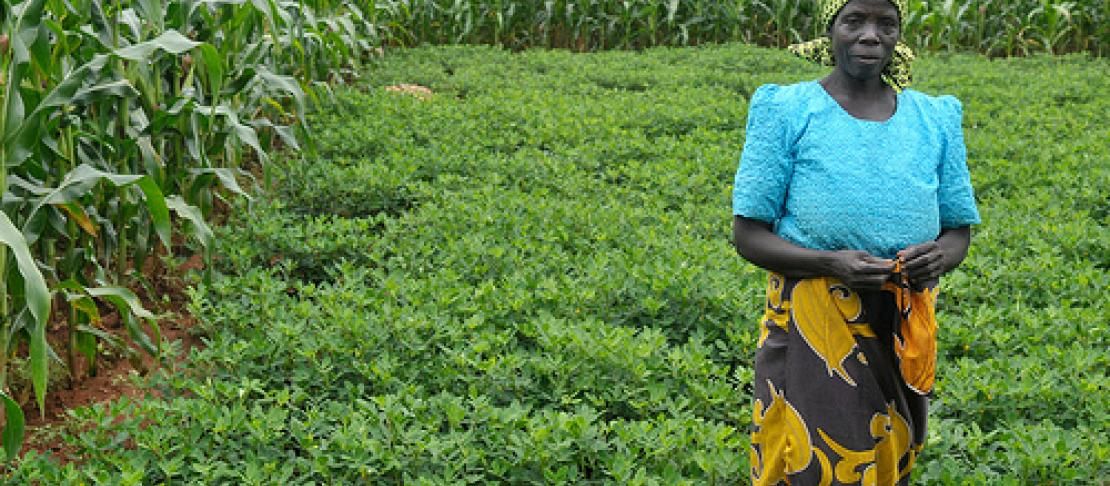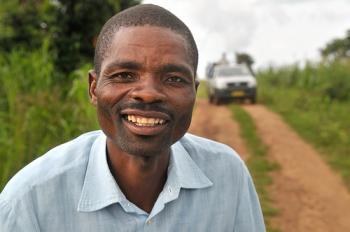Conservation agriculture in Malawi: "We always have problems with rain here"

This blog post was initially published on the International Maize and Wheat Improvement Center (CIMMYT) web page
Smallholder maize farmers in Malawi are adopting sustainable crop management practices that cut labor and help capture and hold rainfall, salvaging harvests when water is scarce.
One early-March afternoon along the way to Zomba about 150 kilometers south of Lilongwe, a rainstorm bursts upon parched, yellowed maize fields that roll far out over surrounding hills. A month prior, the water would have been a godsend to the crop, which was thirsting under another of the region's prolonged droughts. Now many dessicated plants are too far-gone to save.
Southern Malawi maize farmers will lose a third or more of their harvest to 2012's dry weather, according to agricultural extension expert Mphatso Gama. "Of course, we always have problems with rain here," he says, "but this year has been the worst, from the word 'go.' " Maize grain is the chief food of Malawi. Many southern households could soon face a long "hungry season"—the months until the next maize harvest, after last year's grain has been eaten.
Hope will not wilt
Some will escape hunger, among them more than 400 farmers and their families at a location called Lemu in Balaka Township, southern Malawi. Over the last six years they have begun using conservation agriculture—a set of practices that includes eliminating traditional ridge-and-furrow tillage systems, keeping crop residues on the soil, and rotating or intercropping maize with other crops. Conservation agriculture specialists have long sung the virtues of such approaches: labor and cost savings, improved soil structure and fertility, increased infiltration and water retention, less erosion or greenhouse gas emissions. Conservation agriculture is widely practiced by farmers in the USA, Canada, Australia, and the Southern Cone of South America.
For small-scale farmers in places like Malawi, where maize subsists on rain alone, the benefits of conservation agriculture are most dramatically manifest during dry spells. Then, residues, root holes, and earthworms catch and channel falling rain and retard evaporation. "Maize was wilting this year in conventionally-managed plots due to the drought," said a small group of Lemu farmers who gathered to talk about their management practices. "In fields managed using conservation agriculture, there is no problem."
"This area gets only an average 200-400 millimeters of rainfall per year," says Gama. That's barely enough to raise a maize crop. "The population is dense and the average farm landholding of less than half a hectare supports a household of five members," adds Gama. Farmers grow groundnuts, potatoes, cotton, and cassava, as well as maize, and keep chickens and goats.
"We started (conservation agriculture) with six farmers in 2005-06 and financial assistance and training from CIMMYT." By the 2011-12 crop cycle, nearly one-fifth of the area's 2,200 farmers had adopted the practices. According to Gama, many more would like to, but the country's present lack of currency for imports has constrained access to fertilizer or herbicide—the latter needed to stop weeds in no-till systems.
Saving labor and livelihoods
Belita Maleko, small-scale maize and mixed-crop farmer in the Mwansambo extension planning area, Nkhotakota Zone of central Malawi, was widowed 17 years ago, but kept on farming with help from her family. At the invitation of government extension officers and the non-governmental organization, Total LandCare (TLC), she began adopting conservation agriculture practices and sowing plots to demonstrate those practices to neighboring farmers in 2006.
In Malawi draft animals are scarce and traditional cultivation for maize involves as many as 160,000 hoe strokes per hectare. It appeared strange and somehow unjust to neighbors when Maleko stopped hoe plowing and began to leave residues and stems from previous crops on her fields. "Some asked 'How can you do this?' " said Maleko. "Others speculated that I was degrading the soil…some people thought I was mad, but I said 'No, I'm not mad, I know what I'm doing.' "
Farmers desperately need these new practices to face the challenges coming their way, according to Total LandCare Zonal Manager and Land-Use Specialist, John Chisui. "Climate change has played a role (in farmers' acceptance)," he explains. "People can see that under conservation agriculture, the crop will do much better, compared to conventional agriculture."
Housed in the Ministry of Agriculture and supported by FAO, Malawi's National Conservation Agriculture Task Force now aligns extension efforts, research, and messaging for conservation agriculture. Because the practices are complex and knowledge intensive, it is crucial to coordinate extension. In this, Gama lauded the cooperation of TLC with government extension services, saying it has significantly increased everyone's impact. "On average, there is a single extension worker for every 2,000 farmers in Malawi," he explains. "TLC and government extension jointly plan and work as part of the national strategy for agriculture."
Malawi furnishes a good setting for conservation agriculture, according to Christian Thierfelder, CIMMYT cropping systems agronomist in southern Africa. "Few farmers have livestock, so crop residues can be kept on the fields instead of going for fodder," he says. "There are markets for produce, and herbicide is normally available. There are vibrant extension services, especially if we look at TLC." To enhance soil care and food security, Thierfelder and the Malawi specialists have promoted maize-grain legume rotations. "We've been working with cowpea or soybean, for example, and farmers are particularly excited about maize-groundnut rotations." The work links with and is reinforced by a CIMMYT-led project focusing on the sustainable intensification of maize-legume cropping systems (SIMLESA) for eastern and southern Africa.
Maleko sees conservation agriculture as a blessing that has helped pay for school fees and homestead improvements. "I cannot stop practicing conservation agriculture, because I'm getting lots of benefits," she says. "I have enough time to grow other crops. I'm very happy because I've built another house with the proceeds. I don't even complain about being a widow—otherwise, I wouldn't have sent my children to school. Married women come to me and ask for food. I'm a happy woman."
Watch John Chisui of Total Land Care talks about how Conservation Agriculture is spreading through Malawi with the help of CIMMYT training:
Read more about conservation agriculture and CIMMYT's work.